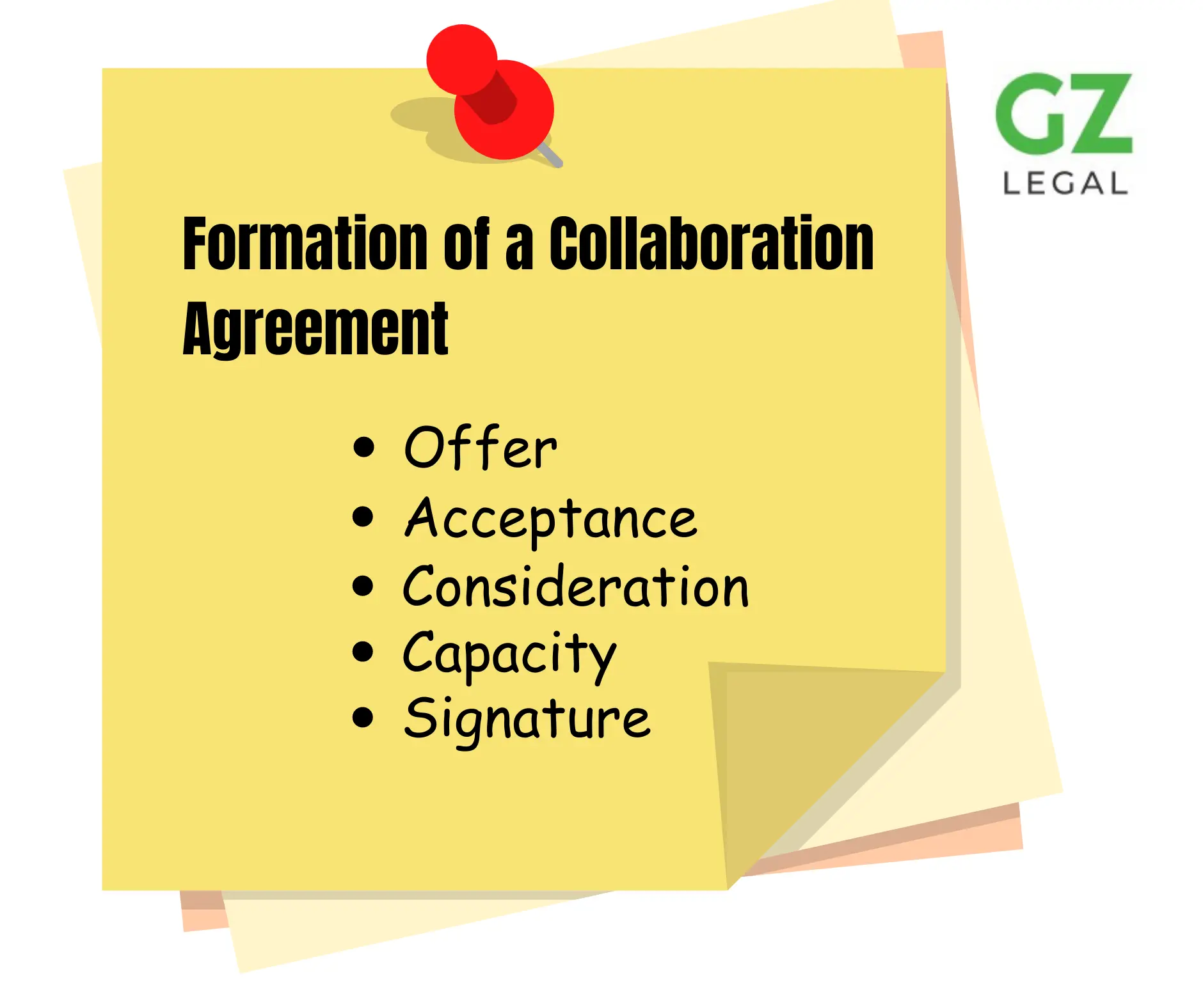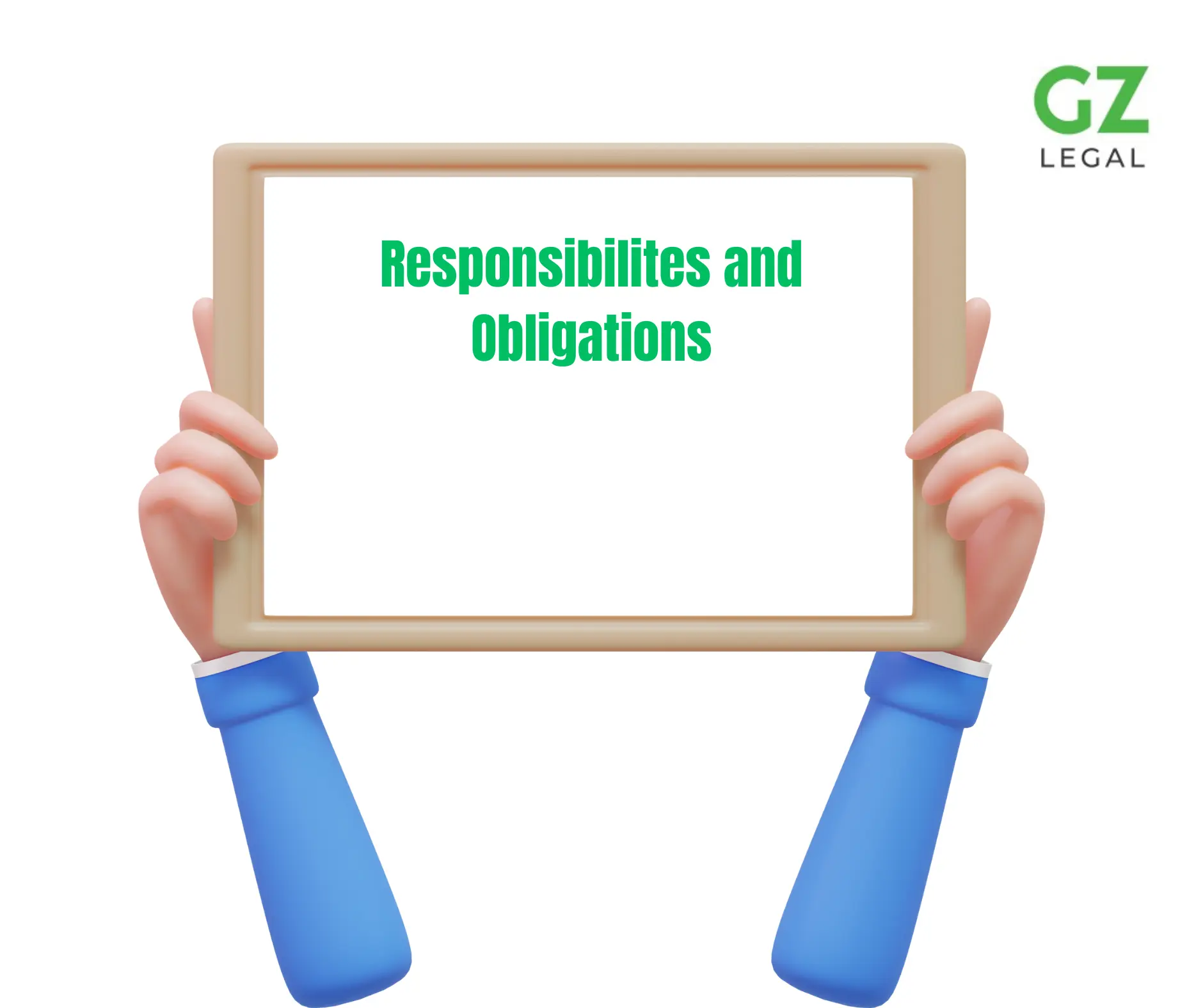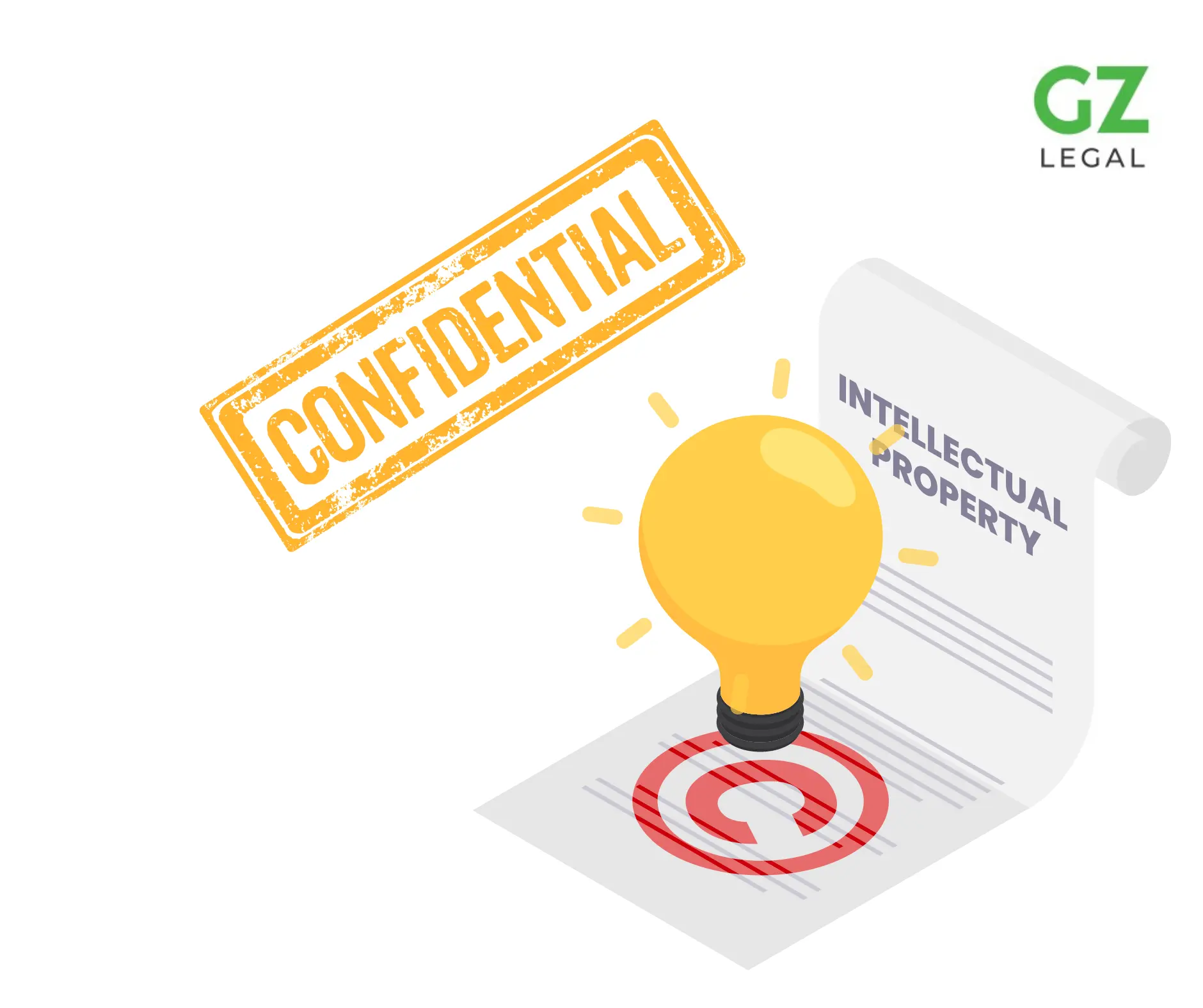Malcolm ZoppiSun Oct 15 2023
Is a Collaboration Agreement Legally Binding? Understanding Key Aspects
Collaboration agreements provide a legally binding framework for parties working together on a commercial project.

In the world of business and commerce, collaboration agreements serve as a foundation for parties planning to undertake a joint venture or work together on a commercial project. These legally binding agreements outline the specific terms and conditions of the partnership, including the allocation of responsibilities and the division of revenues derived from the collaboration. It’s crucial for both parties to thoroughly understand the implications and binding nature of these partnership agreements before entering into one.
A collaboration agreement typically addresses several aspects, such as the formation of the agreement, the responsibilities and obligations of each party, ownership of intellectual property and confidentiality, dispute resolution, and termination provisions. As such, it’s essential to closely examine each of these components to ensure that your interests are protected and that the collaboration runs smoothly. A proper understanding of the legal and commercial aspects of a collaboration agreement can help minimise the risk of disputes and misunderstandings.
Key Takeaways
- Collaboration agreements provide a legally binding framework for parties working together on a commercial project.
- Thorough understanding of the components and implications of collaboration agreements is crucial for a successful partnership.
- Addressing responsibilities, intellectual property, and conflict resolution within the agreement can minimise potential disputes and misunderstandings.
Understanding Collaboration Agreements
In the world of business, effective collaboration agreement can lead to mutually beneficial outcomes. Whether it’s working together on a project or sharing resources, a collaboration agreement serves to establish a clear understanding of the terms and conditions for both parties involved.
A collaboration agreement is a legally binding contract between two or more parties who wish to work together for a specific purpose or project. The agreement outlines the responsibilities and expectations of each party and details how they will cooperate to achieve their common goals. By entering into a collaboration agreement, you are committing to work in accordance with the terms laid out in the contract.
Collaboration agreements can cover a variety of areas such as joint ventures, cooperative projects, and resource sharing. The scope of the cooperation agreement itself will depend on the nature of your collaboration and the goals you and your partner(s) are working towards.
When drafting a collaboration agreement, it’s crucial to ensure that all essential elements are included, such as:
- The objective of the collaboration
- The roles and responsibilities of each party
- The duration of the agreement
- The sharing of resources, profits, and costs
By including these key components, any potential misunderstandings or conflicts can be avoided, and you and your partner(s) can focus on achieving your shared objectives.
As a legally binding contract, collaboration agreements are enforceable by law. Should one party fail to meet their obligations under the collaborative agreement herein, the other party may seek legal remedies such as damages, specific performance, or termination of the contract.
In conclusion, a collaboration agreement provides a solid foundation for a successful partnership by clearly outlining the responsibilities, expectations, and terms for all parties involved. By signing a collaboration agreement, you are committing to work collaboratively and are held accountable to the terms agreed upon formal written document.
Formation of Collaboration Agreements

When forming a collaboration agreement, it is vital to ensure that it is a legally binding document. This requires several elements, which will be discussed in this section.
Firstly, there must be an offer and acceptance between the parties involved. This means that you and the other party should explicitly agree on the terms and conditions of the collaboration. The agreement should outline the purpose, scope, and objectives of the collaboration, as well as each party’s roles, responsibilities payment obligations, and contributions.
Secondly, there should be consideration involved in the agreement. This refers to the value exchanged between the parties, which can be tangible (such as financial contributions) or intangible (such as expertise or intellectual property). Each party should provide something of value in order to make the agreement legally binding.
Next, it is essential to consider the capacity of the other parties being involved. This means that each party must have the legal standing and authority to enter into the agreement. For instance, individuals should be of the age of majority and not under any legal disability, while companies should have the necessary authorisations from their boards or shareholders.
To ensure the collaboration agreement ensures it’s enforceability, it is crucial to have a signature from each party. A signed agreement demonstrates the parties’ commitment to the terms and conditions and their intent to be legally bound by them. In some cases, electronic signatures may be sufficient; however, it is always wise to consult a solicitor regarding the specific requirements for your collaboration agreement.
Involving a solicitor in the process of forming a collaboration agreement can help you navigate the legal complexities and ensure that the agreement is comprehensive and legally binding. A solicitor can advise you on the appropriate clauses to include, help identify potential risks, and assist in resolving disputes that may arise during the course of the various business collaboration agreements.
By addressing these critical elements – offer and acceptance, consideration, capacity, and a signature – you can establish a legally binding collaboration agreement that clearly sets out the rights and obligations of each party. With a well-drafted agreement in place, you can confidently move forward with your collaborative project, knowing that your interests are protected and your collaboration has a solid legal foundation.
Legal Aspects and Binding Nature of Collaboration Agreements
A collaboration agreement is a legally binding contract between two or more parties who decide to work together on a commercial project. In these agreements, the parties involved outline the purpose of their collaboration, the responsibilities of each party, and how the benefits will be shared.
To create a legally binding agreement or contract, there must be an offer and acceptance between the parties. This means that one party proposes the agreement, and the other party accepts it. In collaboration agreements, the offer and acceptance are usually evident in the form of signatures on the document by all involved parties.
The legality of a collaboration agreement is subject to contract law in the jurisdiction where the agreement is signed or enforced. It is essential to ensure that the terms and conditions within the agreement are legally sound and enforceable in the chosen jurisdiction. Some elements to consider to make collaboration agreements important ensure legality include the clarity of responsibilities, the allocation of risk, and adherence to relevant laws and regulations.
It is worth noting that while collaboration and licensing agreements might not always be legally binding, they are still subject to court enforcement if needed. If a dispute arises and one party decides to take legal action, the court will review the collaboration agreement and determine the rights and obligations of each party.
In summary:
- Collaboration agreements are legally binding contracts between two or more parties who decide to work together on a commercial project.
- Offer and acceptance are required to create a binding contract, ensuring that all parties agree to the terms and conditions of the agreement.
- The legality of the agreement is subject to contract law in the relevant jurisdiction, and parties must ensure that the terms and conditions are legally sound and enforceable.
- Courts may enforce collaboration agreements in the event of a dispute, reviewing the agreement to determine each party’s rights and obligations.
Remember, it’s crucial to have a well-drafted collaboration agreement in place to protect your interests and ensure a successful, legally binding partnership.
Responsibilities and Obligations

In a collaboration agreement, your responsibilities and obligations play a crucial role in ensuring the success of the commercial project you are working on. Comprehending and fulfilling these duties is vital for a smooth and productive working relationship with your collaborating partners.
Firstly, as part of a collaboration agreement, you and your collaborating partners need to define each party’s roles and responsibilities clearly. Establishing each company’s distinct contributions and expectations early in the process helps avoid misunderstandings and conflicts later on.
Effective communication between all parties involved in a such joint venture agreement is essential. You must maintain transparent communication channels and engage in regular discussions regarding the progress and any challenges faced in the collaborative project. This helps in identifying and resolving issues in a timely manner, ensuring the success of your collaboration.
Collaboration agreements are legally binding contracts, so you should be aware of your obligations specified in the agreement. Adhering to the contractual terms is vital to prevent any legal disputes between the parties. Make sure you understand and comply with all the provisions of the contract, as failure to do so may lead to penalties or even termination of the agreement.
Finally, it is crucial to periodically review the progress and performance of the collaboration project. This includes evaluating each party’s contributions and adjusting responsibilities accordingly to ensure the project continues to run efficiently. Regular reviews help identify any areas requiring improvement or adjustments to better align with the goals of the collaboration.
By comprehending and fulfilling your responsibilities and obligations in a collaboration agreement, you can contribute to the success of the joint venture and maintain a harmonious working relationship with your collaborating partners.
Intellectual Property and Confidentiality

In a collaboration agreement, it is crucial to address intellectual property (IP) and confidentiality matters. Both parties should have a clear understanding of their respective rights and responsibilities regarding intellectual property and confidential information.
As you enter into a collaboration agreement, you should consider the various types of intellectual property rights involved, such as patents, trademarks, copyrights, and trade secrets. It is important to outline how each party’s existing intellectual property will be managed during the collaboration and how any new intellectual property created during the project will be handled.
You and your collaborator should also establish how confidential information will be treated and protected throughout the collaboration. Ensuring clear guidelines for sharing and safeguarding sensitive information is crucial to maintaining trust and preventing disputes.
It’s essential to have a strong confidentiality clause in your collaboration agreement. This clause should define what constitutes confidential information, who owns the data, and how it is to be managed and protected. Additionally, the agreement should specify any limitations on the use or disclosure of confidential information by either party.
Data protection is another significant aspect to consider. Complying with relevant data protection regulations, such as the General Data Protection Regulation (GDPR) if your collaboration involves European Union citizens, is crucial. This may require incorporating specific data processing and protection provisions in the agreement to adhere to the law.
Remember to put guidelines in place regarding the return or destruction of confidential information at the end of the collaboration. This ensures that sensitive data is adequately disposed of, reducing the risk of unintended disclosure.
In summary, addressing intellectual property and confidentiality matters in your collaboration agreement is vital. Be sure to consider existing intellectual property rights, new IP generated during the project, and the treatment and protection of confidential information. By doing so, you can create a solid foundation for a successful and legally compliant partnership.
Disputes and Conflict Resolution

During the course of a business collaboration agreement, disputes may arise between the parties involved. It is essential to have a clearly-defined dispute resolution process in your collaboration agreement to manage and resolve conflicts effectively. This section will guide you on various aspects related to disputes and conflict resolution in a legally binding collaboration agreement.
When drafting your collaboration agreement, ensure that you provide a detailed dispute resolution procedure. This procedure should identify the steps to be taken if disputes arise, such as negotiations between the parties or involving a neutral third-party mediator. In some instances, arbitration or litigation may also be considered for resolving disputes, depending on the nature of the issue and the parties’ preference.
Effective negotiation skills are crucial in addressing disputes and minimising risks associated with conflicts. You should adopt a flexible and co-operative approach when navigating disagreements to find mutually agreeable solutions. This encourages a harmonious working relationship among the parties involved and increases the chances of a successful collaboration.
Incorporating clear terms in your collaboration agreement regarding the enforceability of decisions reached through dispute resolution mechanisms can provide a strong foundation for addressing disagreements. This will help ensure that the decisions made during the dispute resolution process are adhered to by all parties and are enforceable in case of any breach.
Remember, disputes and disagreements will inevitably occur in collaborative projects, but having a well-defined dispute resolution process incorporated into your collaboration agreement will provide the necessary framework for managing and resolving conflicts. So, take the time to outline this process to ensure a smooth, successful collaboration and to protect your interests.
Termination Provisions
When drafting a collaboration agreement, it’s important to include termination provisions. These clauses outline the specific conditions under which either party may choose to end the contract. In doing so, you protect your interests and clarify the process for ending the collaboration in the event of unforeseen circumstances.
Consider specifying a termination clause for both parties involved. This can help to ensure that the process is fair and mutually agreed upon. Termination clauses often cover various conditions, such as breach of contract, expiration of the agreement, or completion of the project.
Notice periods are another essential aspect of termination provisions. These are the timeframes in which you and your collaborator must provide notice of your intent to terminate the agreement. Notice periods may vary depending on the nature of the contract or the particular circumstances leading to termination. For instance, a shorter notice period may apply for a breach of contract, while a longer one could be specified for planned termination.
It’s crucial to establish the conditions under which the termination of the collaboration agreement can occur. Clearly define situations in which either party is entitled to terminate the agreement, such as non-compliance, performance issues, or legal disputes. Additionally, consider including mutual termination provisions in written agreement, which allow both parties to agree on ending the collaboration.
In summary, a well-drafted termination provision should cover:
- Termination clauses for each party
- Notice periods
- Conditions for termination, both unilateral and mutual termination
By incorporating these elements into your collaboration agreement, you can better protect your interests and create a clear path to ending the collaboration if necessary. Remember to maintain a confident, knowledgeable, neutral, and clear tone throughout the document to ensure clarity and understanding for all parties involved.
Frequently Asked Questions
What are the key elements of a collaboration agreement?
A collaboration agreement typically includes the following essential elements:
- Purpose of the collaboration
- Roles and responsibilities of each party
- Allocation of resources and costs
- Distribution of revenues and benefits
- Management structure and decision-making process
- Communication and reporting mechanisms
- Confidentiality and non-disclosure provisions
- Intellectual property rights
- Dispute resolution procedures
- Termination clauses
How can a collaboration agreement be terminated?
A collaboration agreement can be terminated under different circumstances, such as:
- Upon completion of the project or purpose for which the collaboration was formed
- By mutual agreement between the parties
- If one party breaches the terms and conditions specified in the agreement
- If insolvency or bankruptcy occurs for one or more parties
- By a pre-determined termination date mentioned in the agreement
Does a verbal collaboration agreement hold legal value?
While verbal collaboration agreements legally are not as secure or easily enforceable as written contracts, they can still hold legal value in some jurisdictions. However, in complex arrangements or projects, a written collaboration agreement is highly recommended to ensure clarity and avoid potential disputes.
What is the difference between a collaboration and partnership agreement?
A collaboration agreement refers to an arrangement between two or more parties working together on a commercial project with specific terms and conditions outlining their working relationship. A partnership agreement, on the other hand, typically involves joint management, sharing of profits and losses, and contributing capital and resources to a business or successful joint venture.
How does a collaboration agreement protect intellectual property?
Collaboration agreements generally include intellectual property clauses defining the ownership and usage rights of all pre-existing and newly created intellectual property (IP) during the collaboration. These clauses will outline how the parties plan to share or license IP rights and protect them from unauthorized use or disclosure.
Are there any specific UK laws governing collaboration agreements?
In the UK, collaboration agreements are primarily private commercial contracts governed by civil contract law. The specific terms and conditions of the agreement dictate the rights and obligations of the parties involved. However, there are some general UK laws that could impact collaborative arrangements, such as competition law, data protection regulations, and intellectual property law, which should be considered while drafting a collaboration agreement.
Find out more!
If you want to read more in this subject area, you might find some of our other blogs interesting:
- Step-by-Step Guide on How to Transfer Shares to a Holding Company
- Breach of Settlement Agreement: Consequences and Remedies Explained
- Who Gets the Money When a Company is Sold?
- What is a Counter Offer in Contract Law? Explained Simply and Clearly
- Understanding the Costs: How Much Do Injunctions Cost in the UK?
Disclaimer: This document has been prepared for informational purposes only and should not be construed as legal or financial advice. You should always seek independent professional advice and not rely on the content of this document as every individual circumstance is unique. Additionally, this document is not intended to prejudge the legal, financial or tax position of any person.